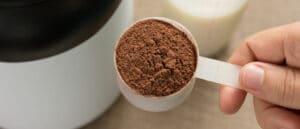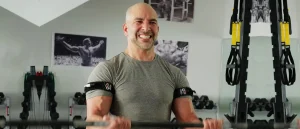Should You Combine Intermittent Fasting and Working Out? Experts Explain
The benefits of intermittent fasting are clear: Trigger autophagy, boost longevity, regulate metabolism, and decrease your risk of chronic disease—including cancer and obesity (1). The relationship between intermittent fasting and working out, however, is complicated.
Exercise requires energy and that energy comes from calories (or food). Deductive reasoning would, therefore, lead you to believe that working out on an empty stomach could cause you to feel low energy during a workout. While this is somewhat true, it’s oversimplified.
Unless you’re powering through a 48-hour fast, you likely have enough stored fuel to push through the average moderate-intensity workout of 30 minutes to an hour, explains registered dietitian Imashi Fernando, MS, RD. If your workout is on the more intense side, however, a common concern is that your body might break down stored protein (read: muscle) for energy instead.
Theoretically, this could be a problem for anyone who cares about muscle mass—which should be everyone, since muscle mass and strength are linked to a longer lifespan and a better healthspan (2, 3). Still, a recent study in healthy men concluded that fasting combined with physical activity does not negatively impact muscle function (4).
So, should you work out while intermittent fasting (IF)? And if you do, how long and how intense can you go before burning up muscle? Fernando and personal trainer Christian Plascencia, CSCS, are here to clear the air.
About the Experts:
Christian Plascencia, CSCS, is a certified personal trainer and health and performance coach who specializes in building durable athletes on and off the field.
Imashi Fernando, MS, RD, CDCES, is a registered dietitian who works in a large hospital system as a clinical dietitian and provides one-on-one nutrition counseling.
Benefits of Working Out While Intermittent Fasting
While working out on an empty stomach isn’t for everyone, Plascencia points to studies that suggest fasted exercise might:
Should You Workout While Intermittent Fasting?
You certainly can exercise while fasting, the better question is should you? According to Plascencia, it depends on your fitness goal.
For fat loss
A review published in the Scandinavian Journal of Medicine and Science in Sports suggests that fasted exercise might increase fat burn for energy (5)—the exact reason bodybuilders swear by fasted cardio for staying lean. However, a slew of research suggests whether you work out while intermittent fasting or with food in your system doesn’t actually impact how much fat you lose (8, 9, 10). So, pick whichever method you prefer.
If you do enjoy working out on an empty stomach, Plascencia has advice: “Keep the intensity of your workouts on the low end to use fat as your main energy source.” How low? Stick to zone 2, or about 60 to 75 percent of your max heart rate. According to applied physiologist Dr. Iñigo San-Millán, PhD, zone 2 is the sweet spot where your body is burning the maximum amount of fat it can use for energy. Notch up the intensity to zone 3, and your body starts turning to glucose. But glucose is limited when in a fasted state.
By keeping the intensity low, you ensure your body has sufficient energy to power through your workout. Plus, the more you train in zone 2, the more efficient your body will become at burning fat for energy (11, 12).
For muscle gain
Those who prize muscle tend to shy away from lifting weights while fasting in an effort to preserve muscle mass. That’s because at higher intensities—like when pushing through a heavy set of squats—your body depends primarily on creatine phosphate, glucose,and glycogen (a form of glucose stored in muscle) to get the job done (13). These fuel sources are great for quick bursts of all-out energy, but they’re limited.
Under conditions of low carbohydrate availability (such as fasting), the contribution from fat and amino acid (protein) oxidation increases. The general concern is that as you burn through fuel, your body might start breaking down muscle to use stored protein for energy. In reality, the contribution of muscle protein to overall energy production is low (13).
While intermittent fasting, it’s not uncommon to lose both fat and lean mass (muscle); however, when intermittent fasting is paired with resistance training, lean mass is generally maintained (14, 15). A small 2023 study published in the International Journal of Sports Physiology and Performance found that whether you exercise in a fasted or fed state, intermittent fasting appears not to have an adverse effect on muscle hypertrophy or strength (16). Still, resistance training had greater effects on strength when in a fed state. So, aim to strength train with food in your belly.
If you prefer to lift fasted, no sweat. So long as you’re fueling with enough protein during your eating windows, you should be solid, says Plascencia. “Ideally, aim to build a big enough glycogen (stored glucose) reserve to ensure you have the energy to get through your volume.”
How to make sure you’re getting enough? On an episode of Huberman Lab, neuroscientist, Andrew Huberman, Ph.D., explains that he likes to up his glycogen stores by eating a carb-heavy dinner the night before a heavy strength workout. Carb loading gives him the energy he needs to get through a mid-morning workout no problem, even after fasting through the night and skipping breakfast.
Just don’t go too crazy. “Research recommends professional athletes (who work out up to four hours a day) carb load with two to three grams of carbs per pound of body weight, but if you’re exercising casually that ends out being way too many calories,” says Fernando. Instead, aim to fill your dinner plate with 50 to 60 percent carbs. “Focus on carbs that are easier to digest—like white rice, pasta, and potato—as part of a balanced meal that includes adequate protein and veggies to promote blood sugar control.”
For performance
“If you’re training for performance, you’re probably pretty metabolically flexible—meaning your body is able to process both fat and carbs as fuel during your workouts efficiently,” says Plascencia. In other words, you should be able to work out fasted or fed no problem.
That said, it depends on the workout. “Having fuel in the tank is important for longer duration and intense activities,” he adds. Which means, if you’re saddling up for an easy 30 to 60 minutes of moderate cardio, you don’t really need to worry about fuel. But if you’re hitting some all-out sprints, suffering through VO2 max work (like a fartlek run or mile repeats), testing your one rep max, or heading out the door for a two-hour endurance run, fuel makes a difference.
As a general rule of thumb, Fernando recommends eating at least 20 to 30 grams of protein both before and after your workout. However, carbs are important too. “The macro split might change depending on the sport, but in general, aim to eat a carb-to-protein ratio of 10:1 at least two hours before your workout and 4:1 within two hours after your workout,” she says.
If you do eat within two hours before any activity, she suggests opting for a low-fat, low-fiber snack like a banana, low-fiber cereal, or a low-fat protein bar to reduce any GI distress during your workout (17). And if you work out beyond 60 minutes, you’ll want to start supplementing with carbs and protein during your workout to cut back on muscle damage and provide a steady supply of energy (18).
For metabolic health
When you’re working out to live longer, performance and gains are often just the icing on the cake. If you find yourself in this camp, research suggests that working out while fasted might be better for metabolic health. One review suggests long-term fasted exercise in healthy people is associated with greater improvements in insulin sensitivity and glycemic control (6).
Another suggests that in overweight adult men fasted cardio may help reduce fasting insulin levels better than non-fasted cardio (19). However, it’s important to keep in mind that weight, BMI, body fat percentage, waist and hip circumference, and cholesterol decreased in both the fasted and eating groups. In other words, if you’re looking to improve body composition, working out fasted or fed will help get you there.
How to Exercise Safely While Fasting
Listen to your body
Just because you’re intermittent fasting and working out, doesn’t mean you need to work out while fasting to get the benefits of both. If you know you get more out of certain workouts with energy in the tank, break your fast before your workout, plain and simple.
Save long or high-intensity workouts for when you’re fueled
“Trying to push through an intense workout when you are feeling low energy and fatigued isn’t a great idea,” says Plascencia. A high-effort workout like sprints or heavy lifting requires a lot of physical and mental energy, and a long run requires more energy. Tamper with performance and you increase your risk of injury, he adds.
Fasted exercise is best saved for a shorter morning workout or a recovery workout. For example: Go out for a light, slow run for a couple of miles, do some mobility work, or decrease your weight and increase your reps in the weight room to taper intensity. Stick to workouts that are 60 minutes or less, suggests Plascencia.
Refuel after
According to Fernando, the biggest priorities after a workout are to refuel with carbohydrates, and to repair damaged muscles with protein. Aim for a macro split of 4:1 (carbs:protein) within two hours of wrapping up your workout—but the sooner the better. Aim for at least 20 to 30 grams of protein.
Get enough fuel during eating windows
“Focus on nutrient-dense foods as part of a balanced diet including around 50 to 60, 20 to 25, and 20 to 30 percent of calories from carbs, protein, and fat, respectively,” says Fernando. For carbs, she aims to get about 50 percent from low-fiber, easy-to-digest sources like white rice, and the other 50 from high-fiber sources like whole grains, starchy veggies, and fruit.
Since it’s tough to hold onto muscle while fasting, Fernando recommends prioritizing protein. To build muscle aim to get at least .7 to 1 gram per pound of body weight (20).
Adjust your fasting schedule to your workouts
If you’re practicing 18:6 IF (where you eat all your meals in a six-hour window, and fast for the remaining 18) you might not have a problem squeezing in a post-workout protein shake. Up the ante to 20:4 or 5:2, however, and things start getting a little more complicated.
“Make your intermittent fasting routine fit within your lifestyle and workout schedule, not the other way around. I’ll be easier to sustain,” says Fernando. “Plus, if you’re skimping on exercise because you don’t have enough energy to get through a workout, then the potential benefits of intermittent fasting are moot.”
Be flexible with your eating window
If you love an early morning run, an eating window of 12 p.m. to 8 p.m. might not work so well, but 9 a.m. to 5 p.m. will give you time to squeeze in a post-workout protein shake. On the other hand, if you enjoy pumping iron in the afternoon, an eating window of 12 to 8 might be better—it’ll give you time to sandwich your strength workout with fuel.
Hydrate
Just because you’re going for an extended time without eating doesn’t mean you should skimp on water. “Dehydration comes with side effects like fatigue which can affect your performance, and can also increase your risk of serious complications like UTIs and kidney stones,” says Fernando. Drink plenty of fluids to prevent dehydration (at least 15.5 cups or 124 ounces per day for men), and supplement with an electrolyte powder that contains sodium, potassium, chloride, calcium, and magnesium.



















